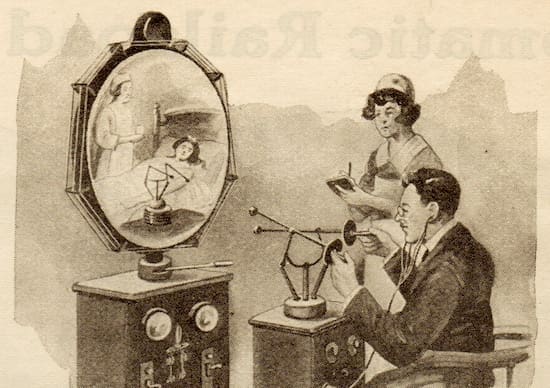Around 70 years ago, Telemedicine made its debut to reach patients in otherwise fairly inaccessible regions where the patients lived. In fact, the first concept for telemedicine was prototyped in the early 20th century in what was known as the ‘Teledactyl,’ a machine that offered a video picture of a patient while a doctor remotely controlled robotic arms to care for the patient. However, while the idea never made it past the conceptual stage, it did closely predict what would become Telemedicine.



What birthed from a necessity to gain access to healthcare for people who would otherwise not be able to receive it, has since grown into the forefront of medical technology and is a powerhouse of integrated medical service delivery. Essentially, Telemedicine is the ‘Teledactyl’s’ modern cousin: a virtual consultation between a doctor and a patient.
The 1950’s brought the first real introduction of Telemedicine as hospitals experimented with the idea of sharing information remotely. They eventually sought to use this application in group therapy sessions in 1964 between the University of Nebraska and Norfolk State Hospital (a distance of 112 miles). In addition to this specialty, they also used video communications to provide speech therapy, neuro exams, psychiatric cases, consultations, research seminars and education and training (National Center for Biotechnology Information)
From Humble Beginnings to Urban Dreams
Once medical personnel began to see the benefits of reaching rural patients remotely, they immediately imagined Telemedicine’s potential in cities as well. The ability to reach patients during times of healthcare shortages and the possibility to treat patients undergoing medical emergencies without delay became clear: This technology offers the opportunity to save lives.
With these opportunities came funding for even more growth: the U.S. Government began offering finances to further telemedicine’s development, NASA got on board with the idea to watch over their astronauts health while away, and with the ever-expanding knowledge and success of Telemedicine, universities, hospitals, and private research groups all began exploring the technology.
Telemedicine’s Accessibility Today
As prices on Telemedicine technology continue to drop and advances in the technology surface, people across the world are seeing the benefits. As video technologies grow and expand like Facebook Video, Skype and Google Hangouts, the number of people who are comfortable meeting remotely is also on the rise (including medical visits). Besides not having to leave their home, patients are saving the time they use to waste sitting in the waiting-room for minor injuries, ailments, checkups, quick consultations, needing a prescription and much more. There are so many scenarios in which a video consultation makes life easier.
What’s more, Telemedicine can be accessed 24/7. If a provider decides, they can set up their availability past regular office hours and meet from home. Whether for emergencies, extra time on the weekend and not wanting to go into the office, whatever the reason, It’s up to them and it’s easy. Additionally, patients can just as easily check-in from home. There are even home-use medical devices that give patients the ability to deliver their medical information on-the-spot remotely, and patients have found the ease and accessibility of these devices to improve their standard-of-living.
Where Telemedicine is Going
Telemedicine has been cutting healthcare costs, increasing patient engagement, and giving people who would otherwise not have access to it a better quality of care. Follow-ups are easier than ever and, thus, care outcomes have improved tremendously. Telemedicine is truly changing the game of medicine across the board.
More than simple check-ups, Telemedicine has evolved into telepsychiatry, teleobstetrics, and telerehabilitation, amongst others. Nearly all forms of healthcare are beginning to adopt Telemedicine’s original idea of treating the patient at a distance. Though the ‘Teledactyl’ might not have had it exactly correct, its premonition of viewing and treating the patient remotely lives on and is crossing all boundaries of medicinal sciences.
If you’re interested in learning more about Telemedicine and how it can positively impact your life or practice, contact us today and we’ll be happy to learn about your usecase and discuss how we can help you. Our HIPAA-compliant video services and unbeatable customer service will help you connect securely and easily with doctors and patients across the globe.
